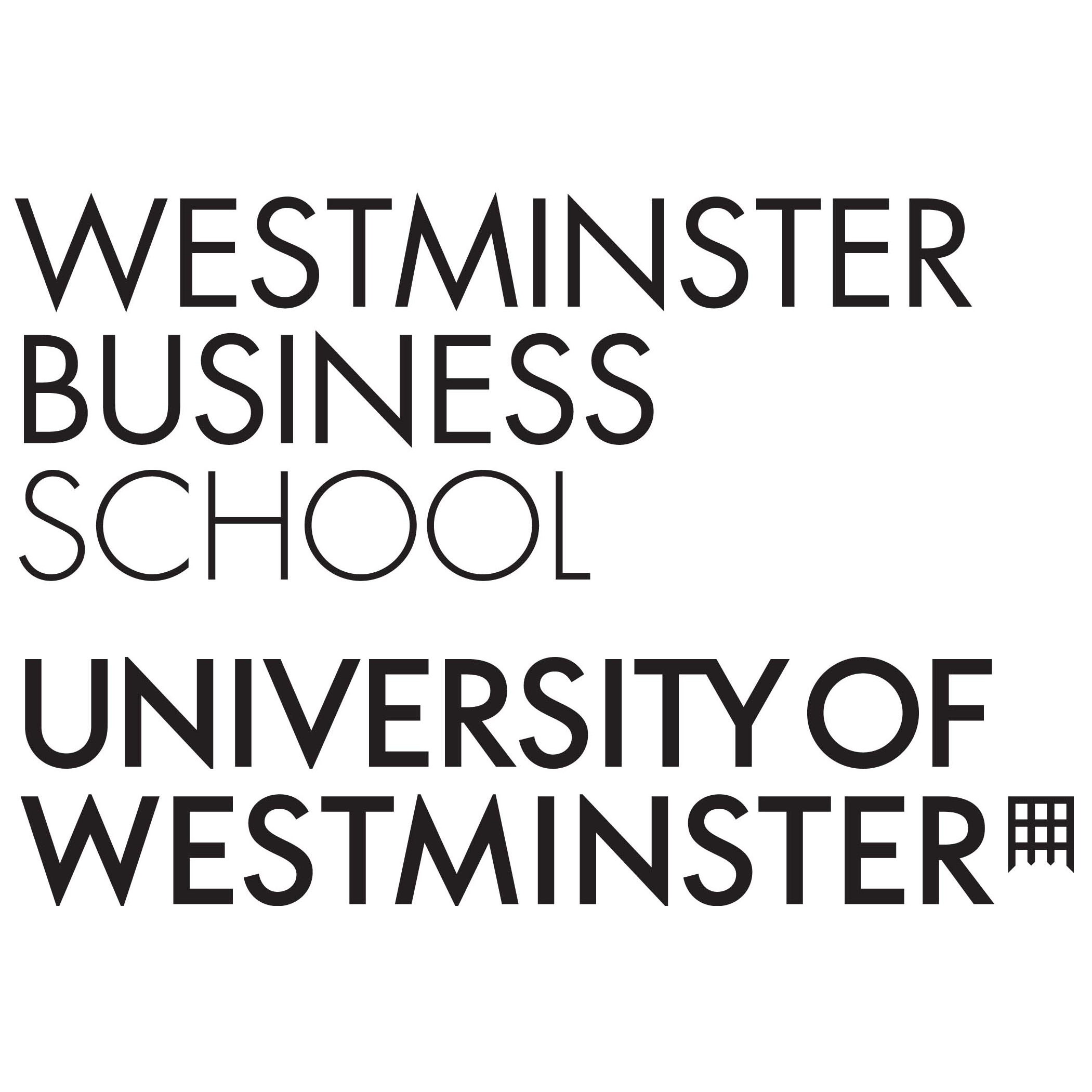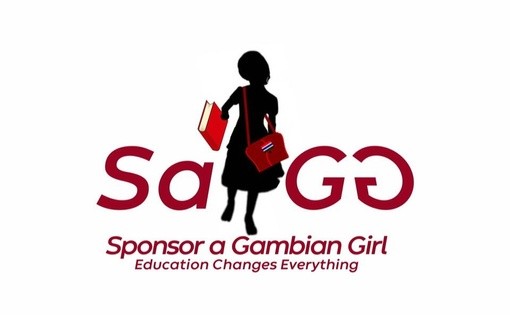The SaGG (Sponsor a Gambian Girl) Foundation is a non-profit organisation that aims to empower Gambian girls and women through education. To enable them to express and reach their full potential, it promotes gender equality and a society where women’s education is granted and not up for discussion, assists in matching disadvantaged girls with sponsors that, with just £10 a month, can support their access to schooling, and strives for the implementation of more progressive policies for girls’ education [1].
With these goals in mind, the charity has been able to support 120 girls so far [2]. However, nothing is ever enough when it comes to such a worthy cause. Therefore, the SaGG Foundation must keep track of its initiatives and collect data and insights about both its micro-environment and macro-environment. Here is where the so-called social media listening comes into play.
Social media listening, often referred to simply as social listening, is the process of tracking social media platforms for mentions and interactions relevant to a brand in order to analyse them, extract actionable insights, and build reports capable of supporting the development of a plan or strategy [3]. Thereby, for any organisation, this audit is of great value for assessing its social media assets and conversations, examining its competitors’ social media efforts, and investigating its target audiences [3].
Company audit
To promote its cause, in addition to its corporate website, the SaGG Foundation relies on four social media platforms: Facebook, Twitter, LinkedIn, and Instagram. On all these platforms, it mainly employs visual content, such as images and short videos, usually complemented with hashtags and CTA like links to its website and blog in order to increase traffic and boost participation.
Its social media initiatives aim to provide potential sponsors with educational and informative content focused on women’s empowerment and girls’ education, encouraging them to visit its other digital properties to find out more information. Additionally, each platform has a more specific focus. For instance, Facebook, which gathers more followers, serves to create awareness and promote actions, such as donations, while Twitter and Instagram are primarily used to reach big audiences, especially by the use of relevant hashtags. Lastly, LinkedIn is leveraged to raise awareness among professionals and build thought leadership and reputation, benefiting from its networking opportunities that allow organisations to demonstrate their expertise and start valuable conversations within their industry’s community.
The SaGG Foundation regularly updates its profiles, posting around three times a week and with a higher frequency on special events such as Women’s International Day. Moreover, its content is well integrated and coherent across all its digital platforms. However, it lacks diversification as most of its posts are published on each social media page without any change. This repetitiveness could be the reason for its low engagement rates that, as can be observed in the underneath images, are below the average recorded by non-profit organisations on Facebook [4] and Instagram [5]. The foundation reaches above-average engagement rates only on Twitter [6] and LinkedIn [7], even though these outcomes have little relevance when considering the small number of followers that the two platforms gather.
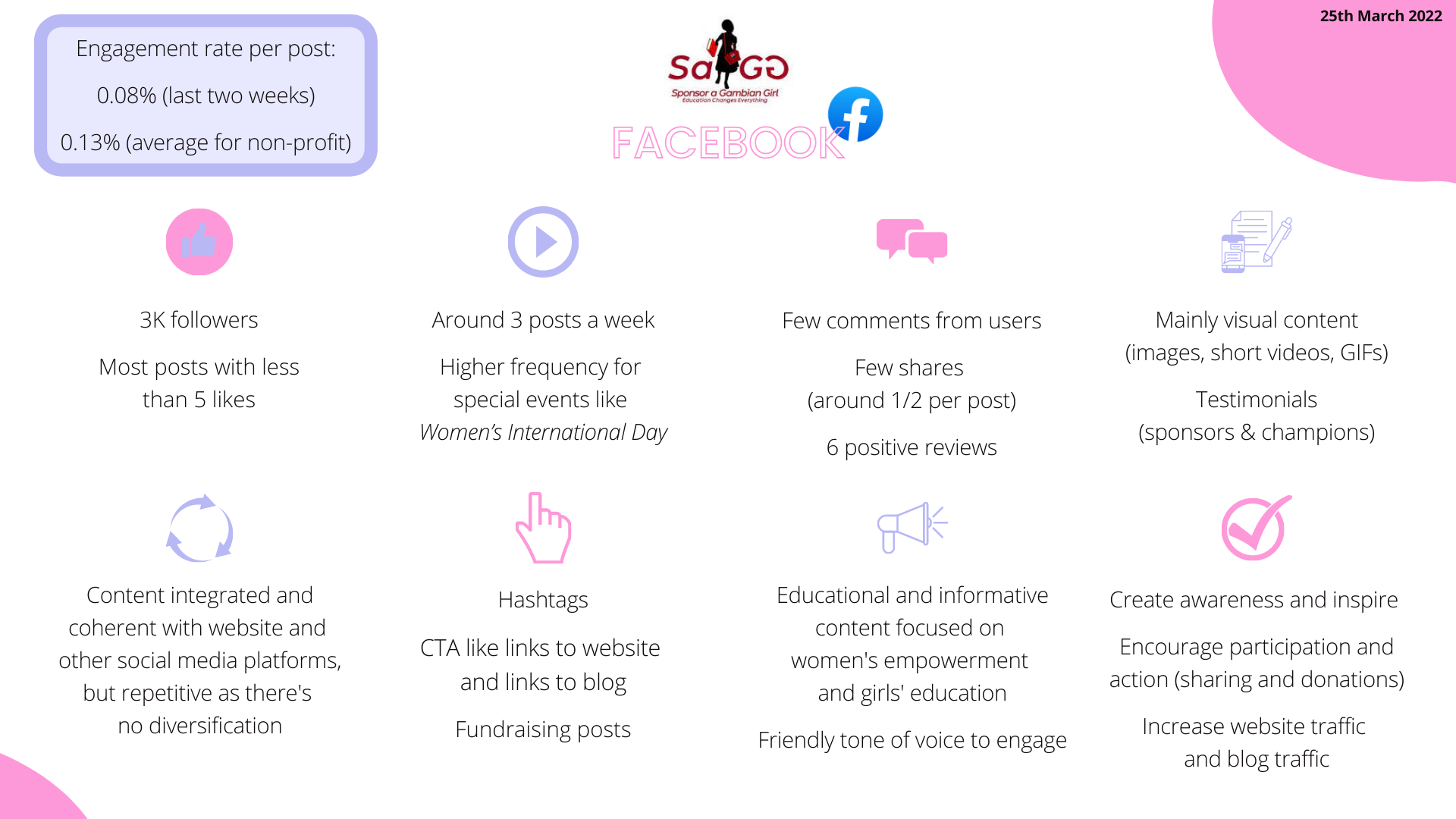
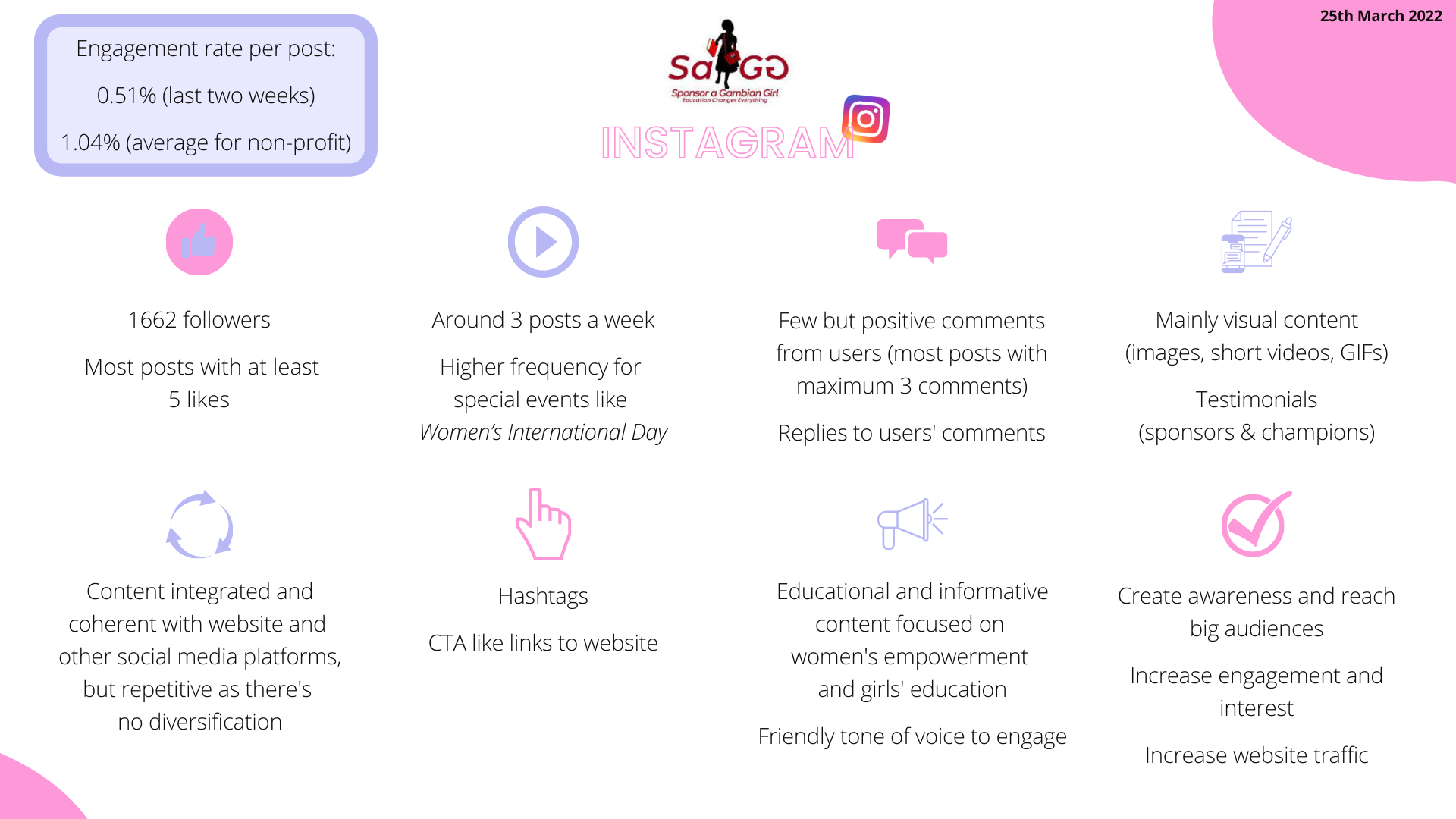
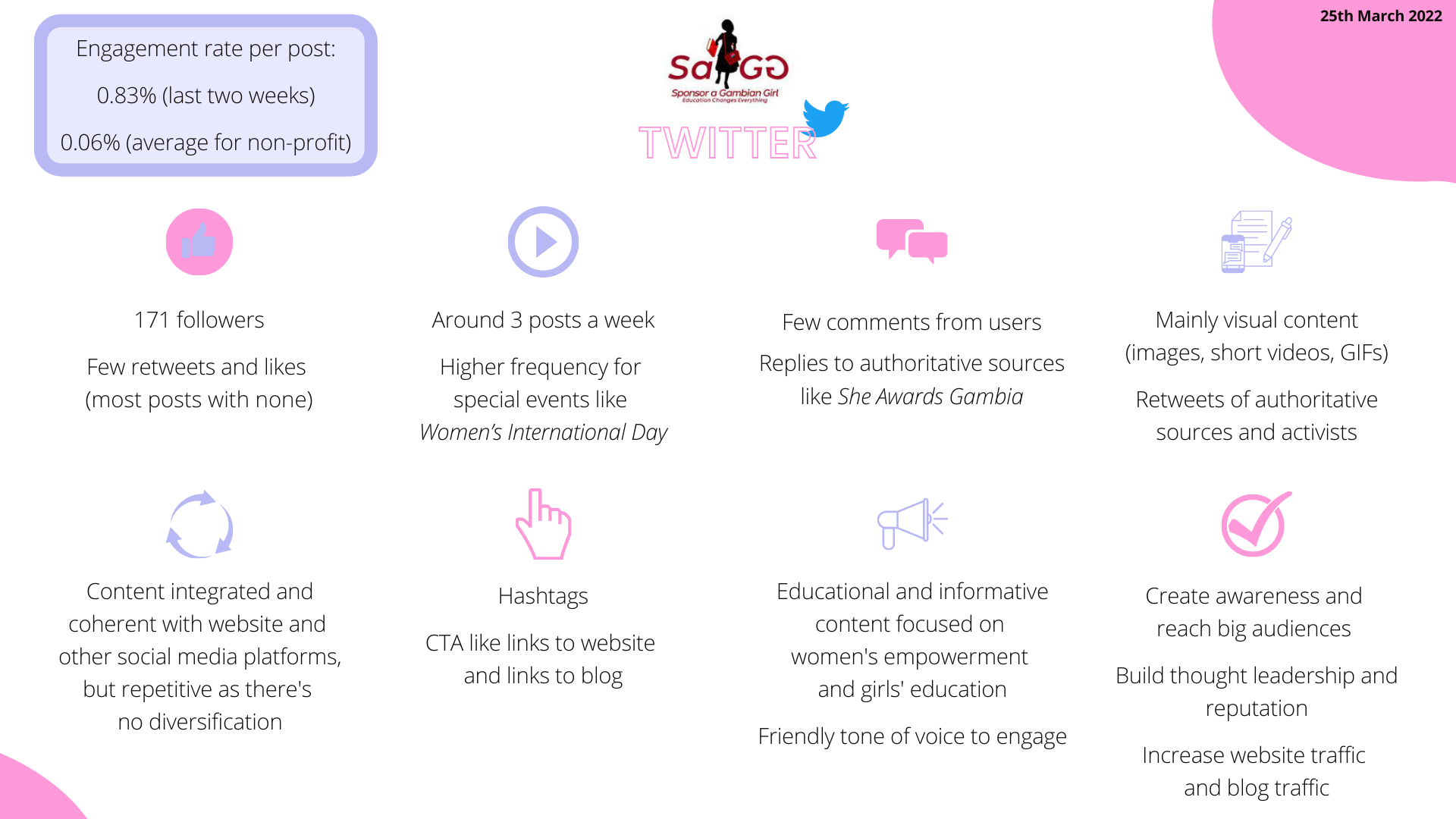
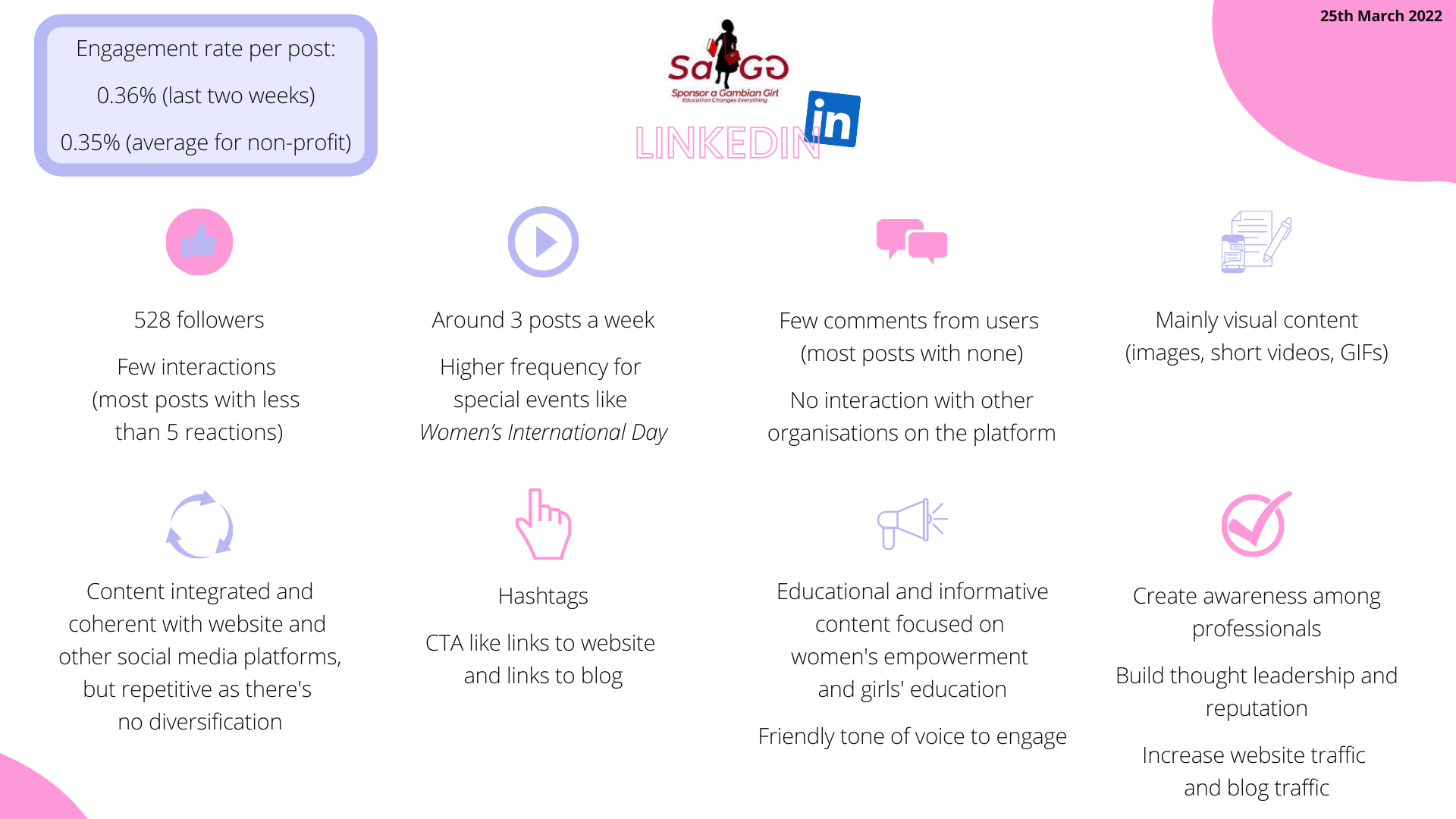
Competitors audit
The need for the SaGG Foundation to enhance its social media efforts is even more noticeable when taking into account some of its competitors, that is, other non-profit organisations that fight for women’s rights and women’s empowerment. For instance, as can be noticed in the underneath images, CAMFED (Campaign for Female Education) records an above-average engagement rate on Facebook, similarly to AWDF (African Women’s Development Fund) on LinkedIn. These better results are certainly due to the greater reach that the two institutions have, but above all to their choice to provide content diversification across all the different digital platforms on which they are active.
On the other hand, when compared to Together Women Rise and Leading Ladies Africa, the SaGG Foundation scores better in terms of engagement rate on Twitter and Instagram, respectively. These poor results obtained by the two competitors may be due to the lack of diversification in content publication and the lack of interaction with users, as the administrators of their profiles generally reply only to activists’ and partners’ comments. Nevertheless, the lower performance achieved by these two non-profit organisations is offset by their higher reach and update frequency, as stressed in the underneath images.
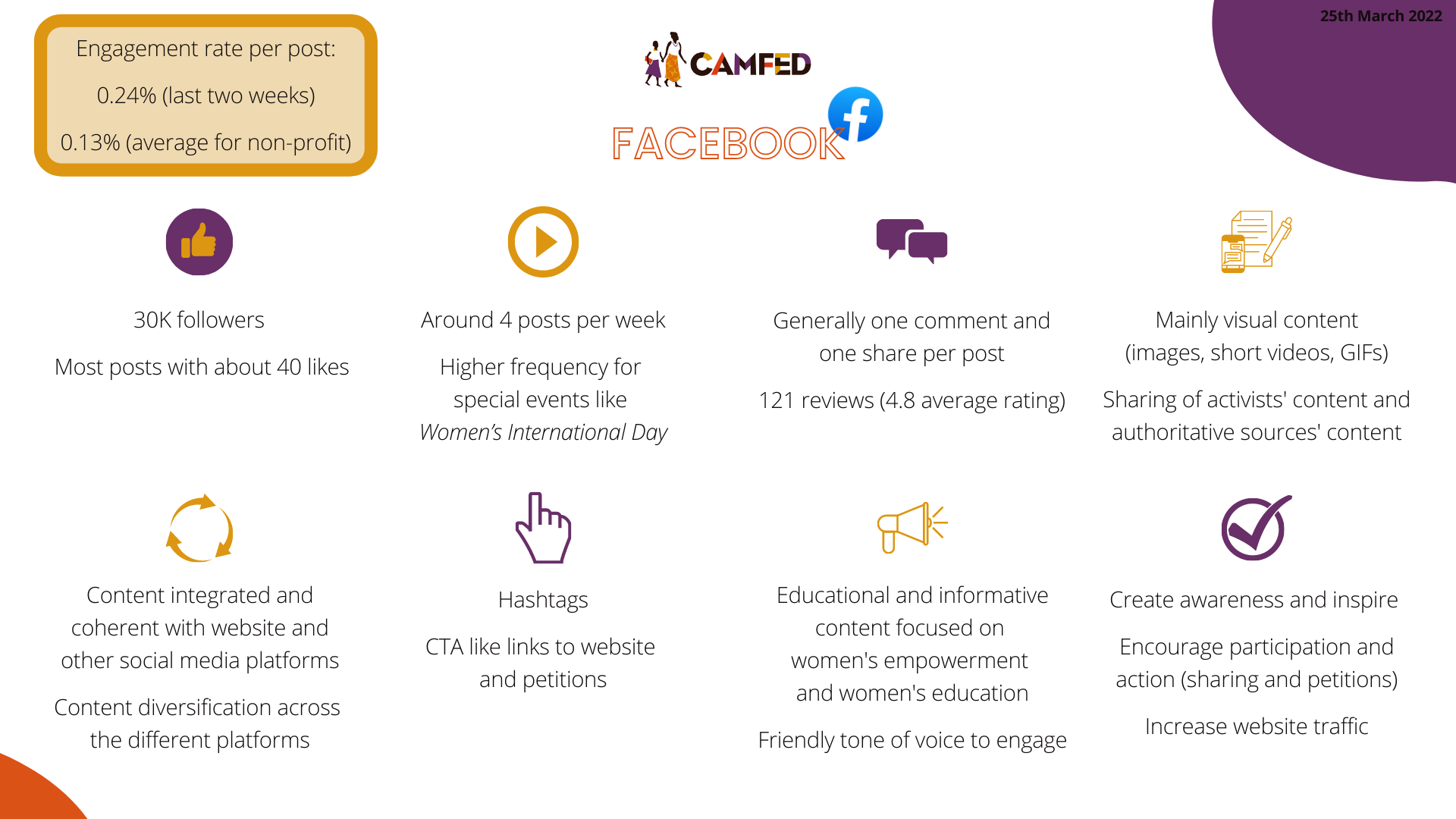
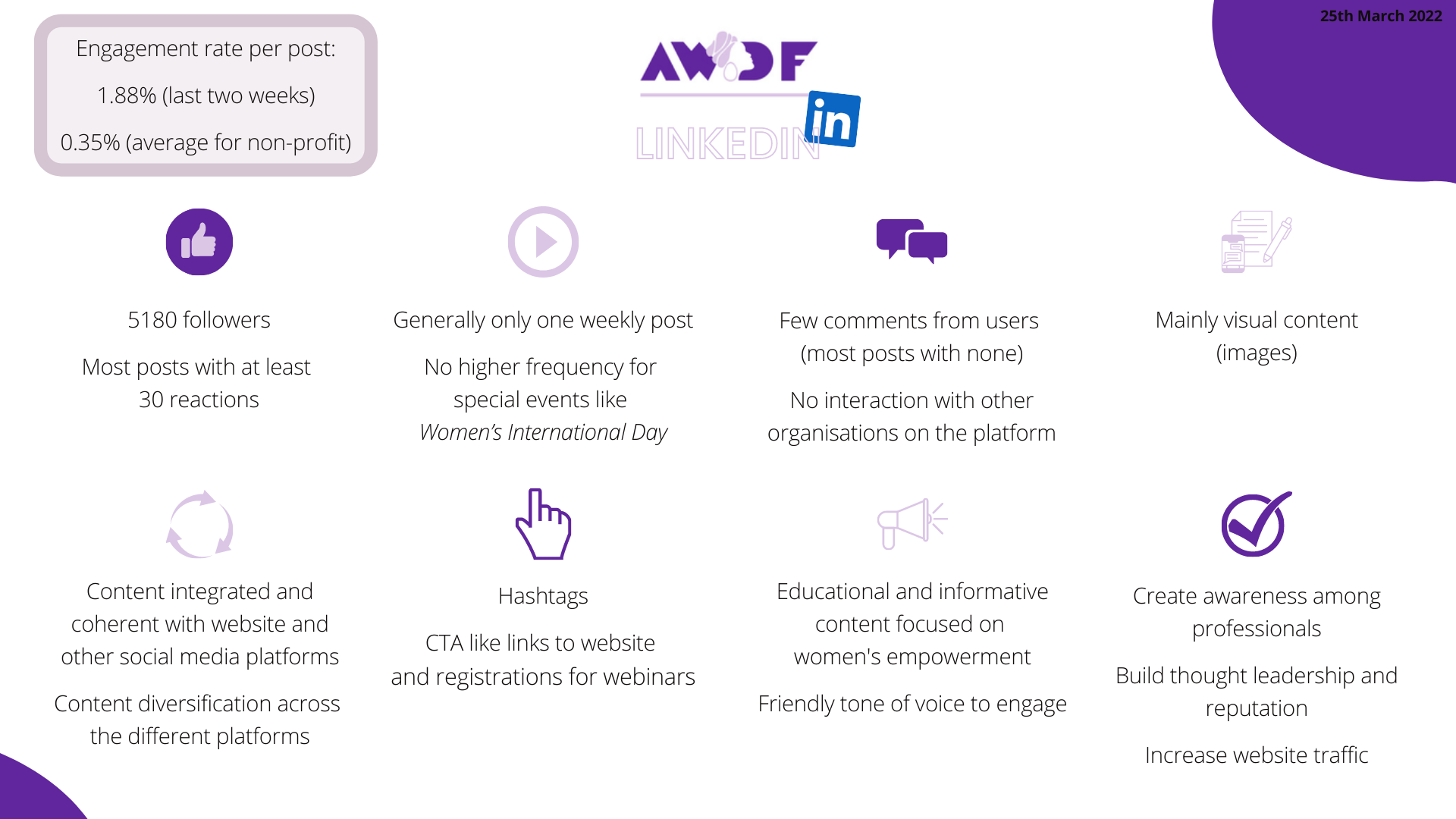
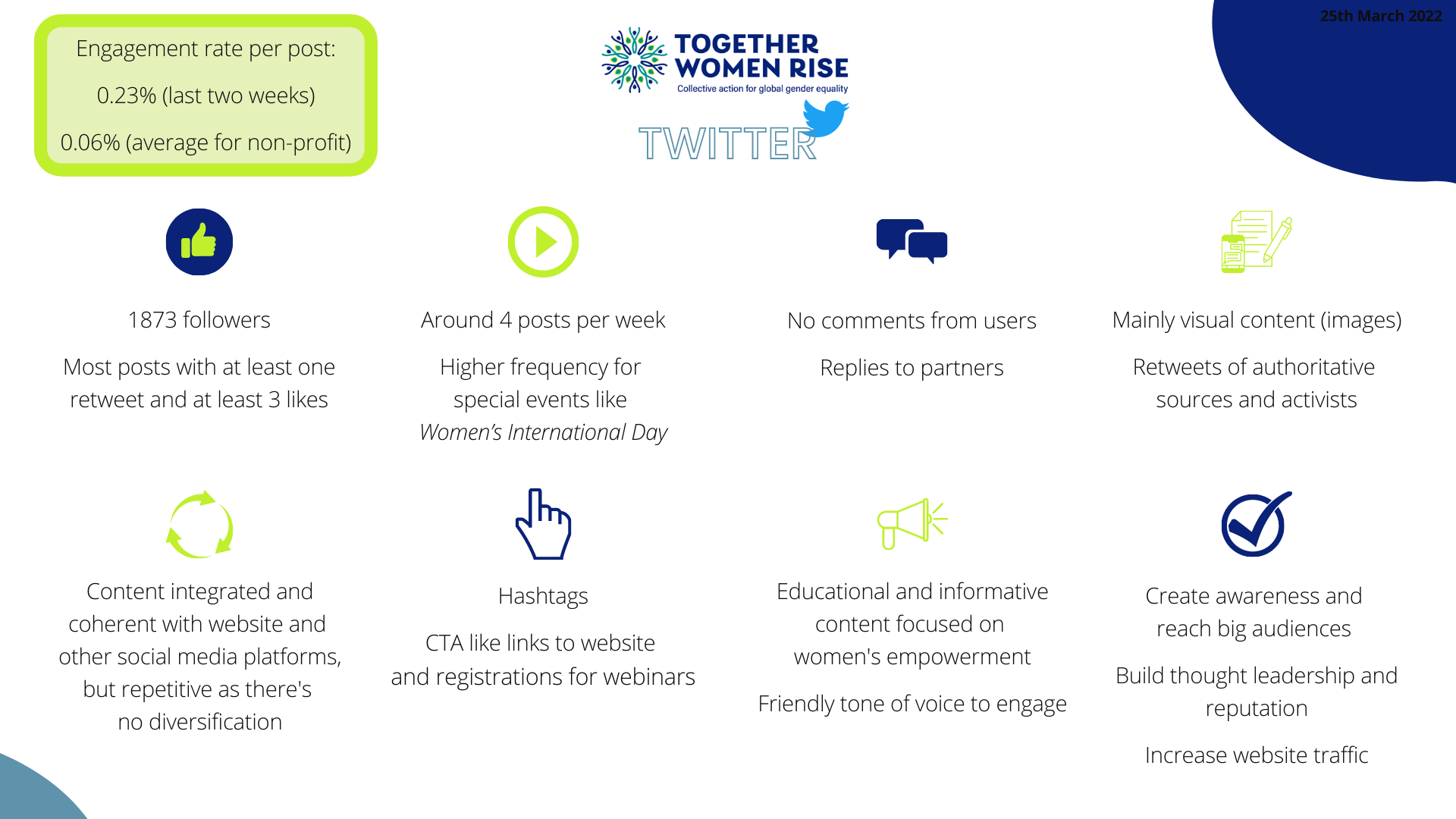
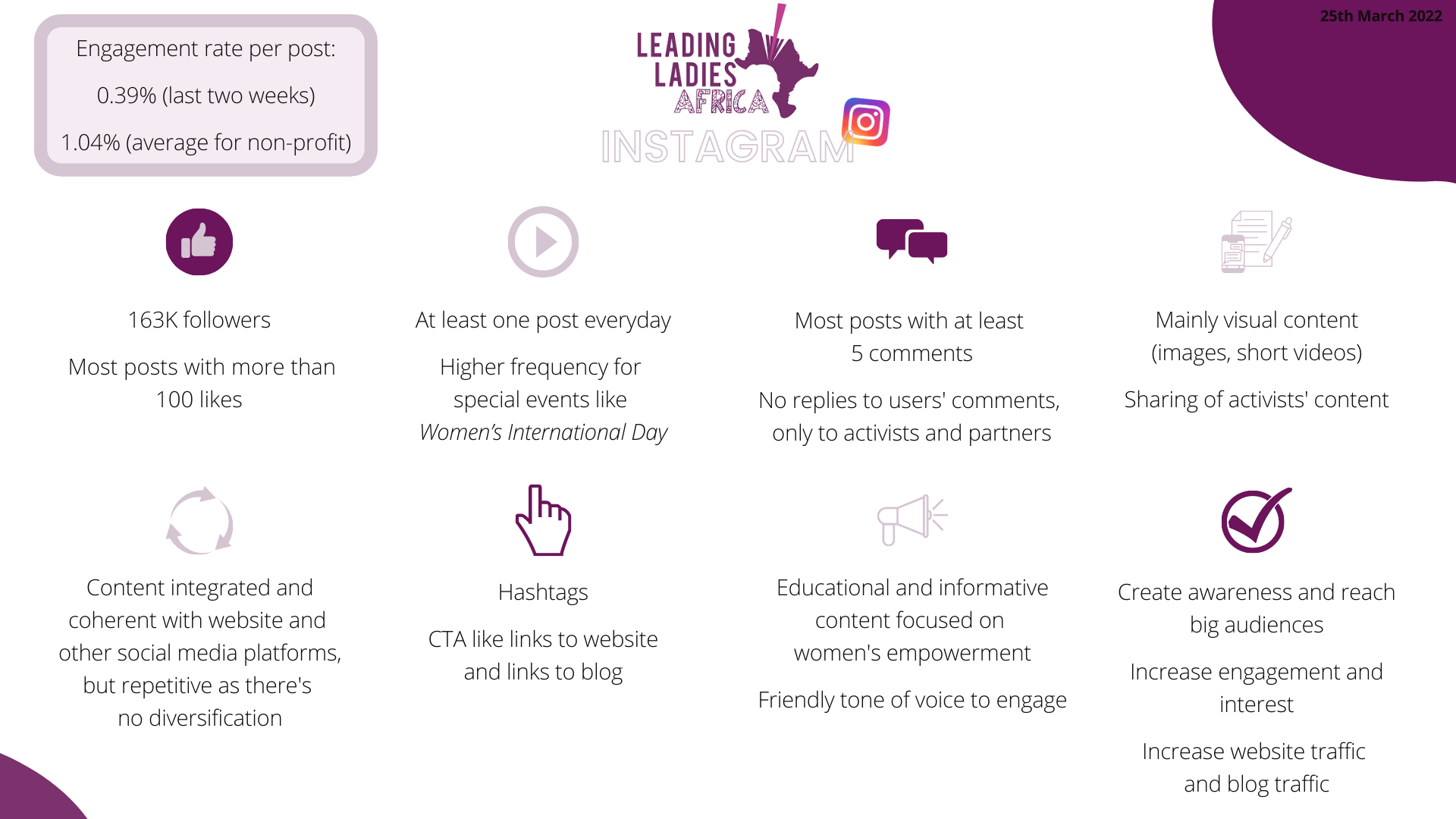
Consumers audit
The SaGG Foundation‘s primary target audience consists of women aged between 21 and 40, with a university background, and interested in gender equality, women’s education, and activism. The charity manages to reach this audience on Instagram, where the percentage of female users is much higher than that of male users (72.9% vs. 27.1%) [8]. The same cannot be said for Facebook, where men claim a slighter greater presence (52.3% vs. 47.7%) [8]. However, both platforms address the right audience in terms of age, as most followers are aged between 18 and 44 [8].
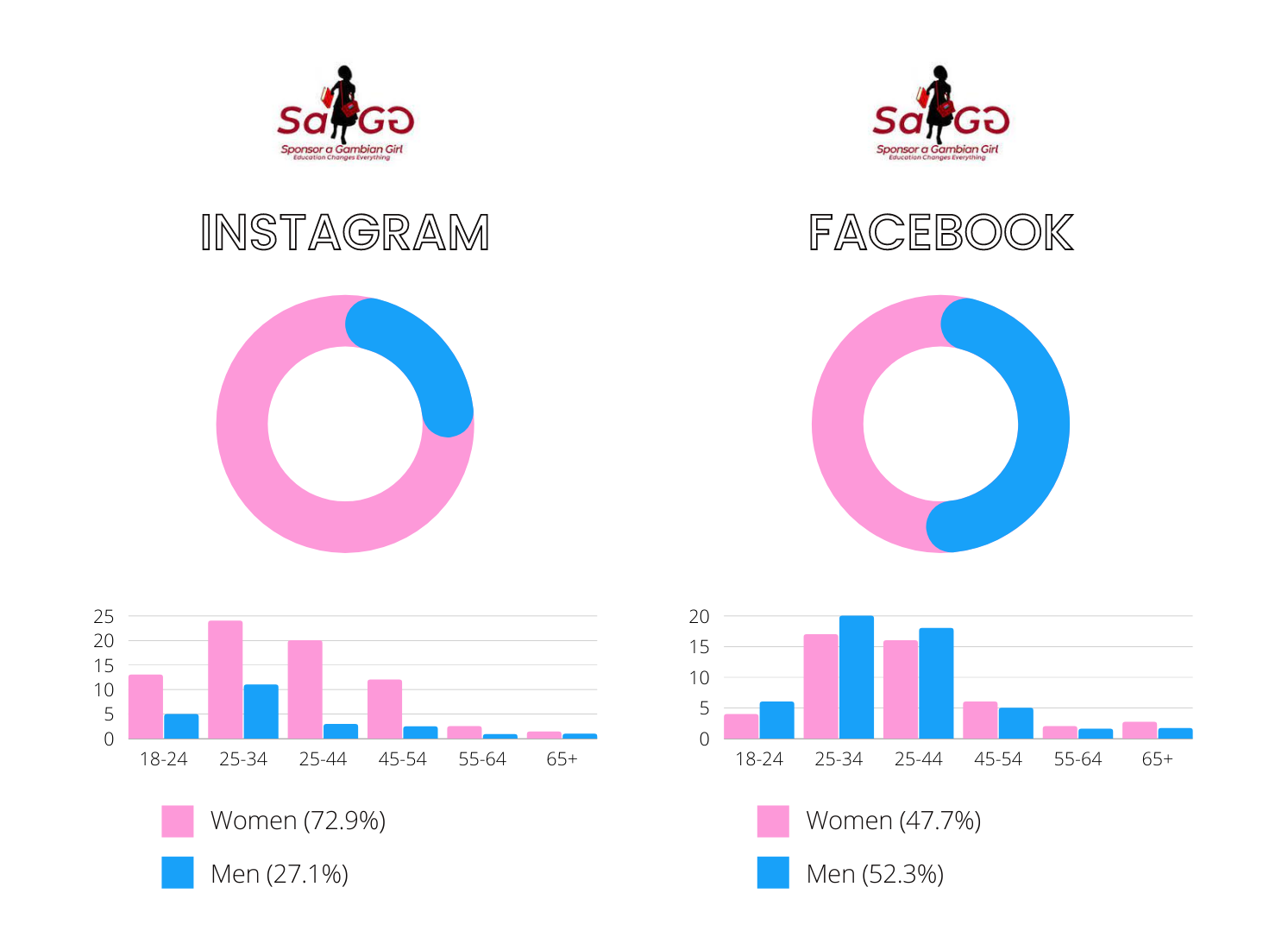
Even though the organisation cannot boast outstanding engagement rates, the few comments that it receives are always favourable and encouraging and underline how crucially important its cause is. Indeed, its primary audience is sensitive to discrimination, gender biases and stereotypes, and, consequently, gains satisfaction from seeing women overcoming challenges and making great strides in male-dominated sectors.
This sensitivity comes to light also when looking at users’ search behaviours. For instance, relying on AnswerThePublic, it is possible to notice that, as regards the keywords “Girls’ education” and “Girls’ education Africa”, most people search for information about women’s education and its relevance, in order to understand what educating girls means and how providing education to women can have a more than positive impact on society, especially in terms of reaching gender equality. Moreover, many searches point out users’ intention to learn about inspirational people that fought or are fighting for women’s right to education and their potential interest in supporting the cause through sponsoring.
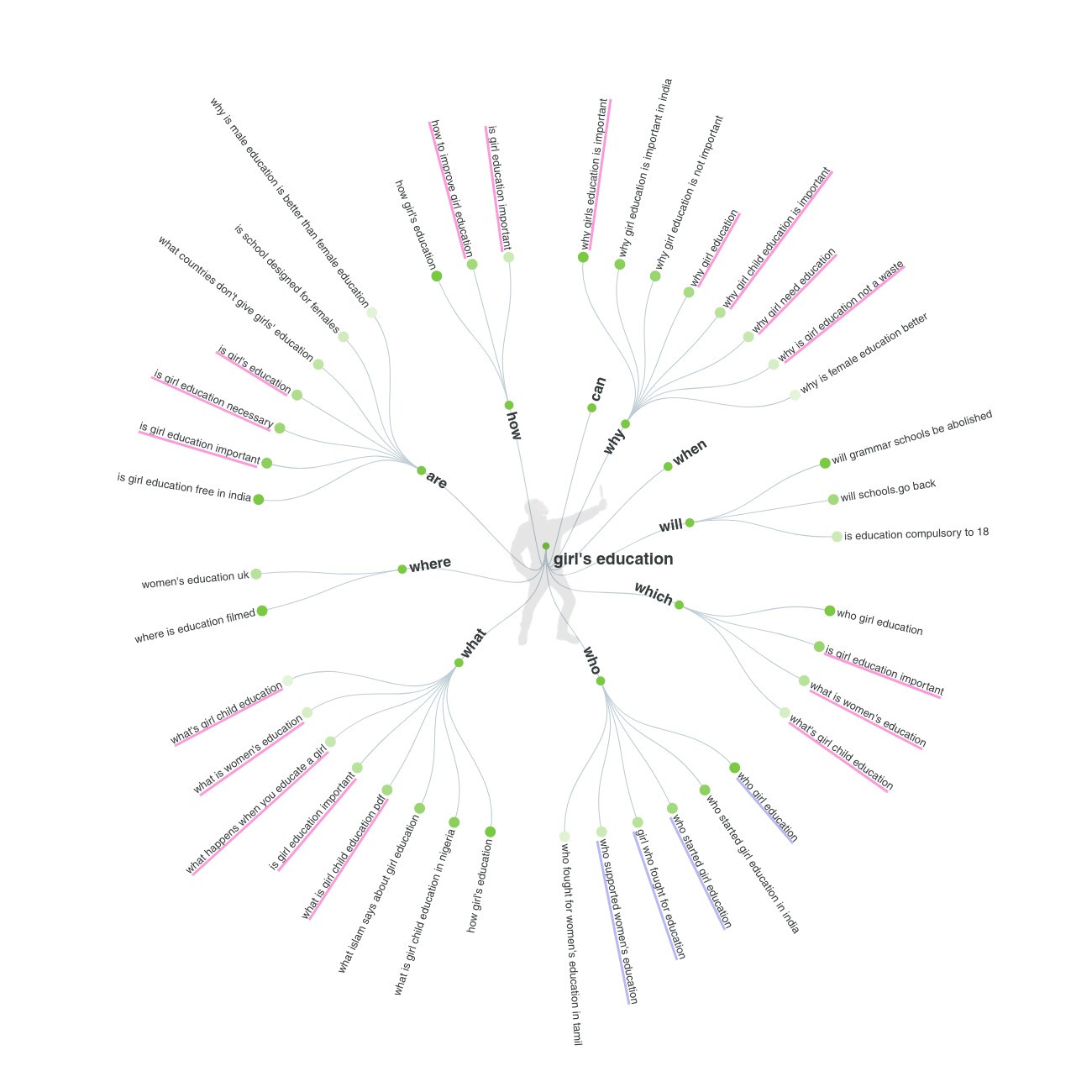
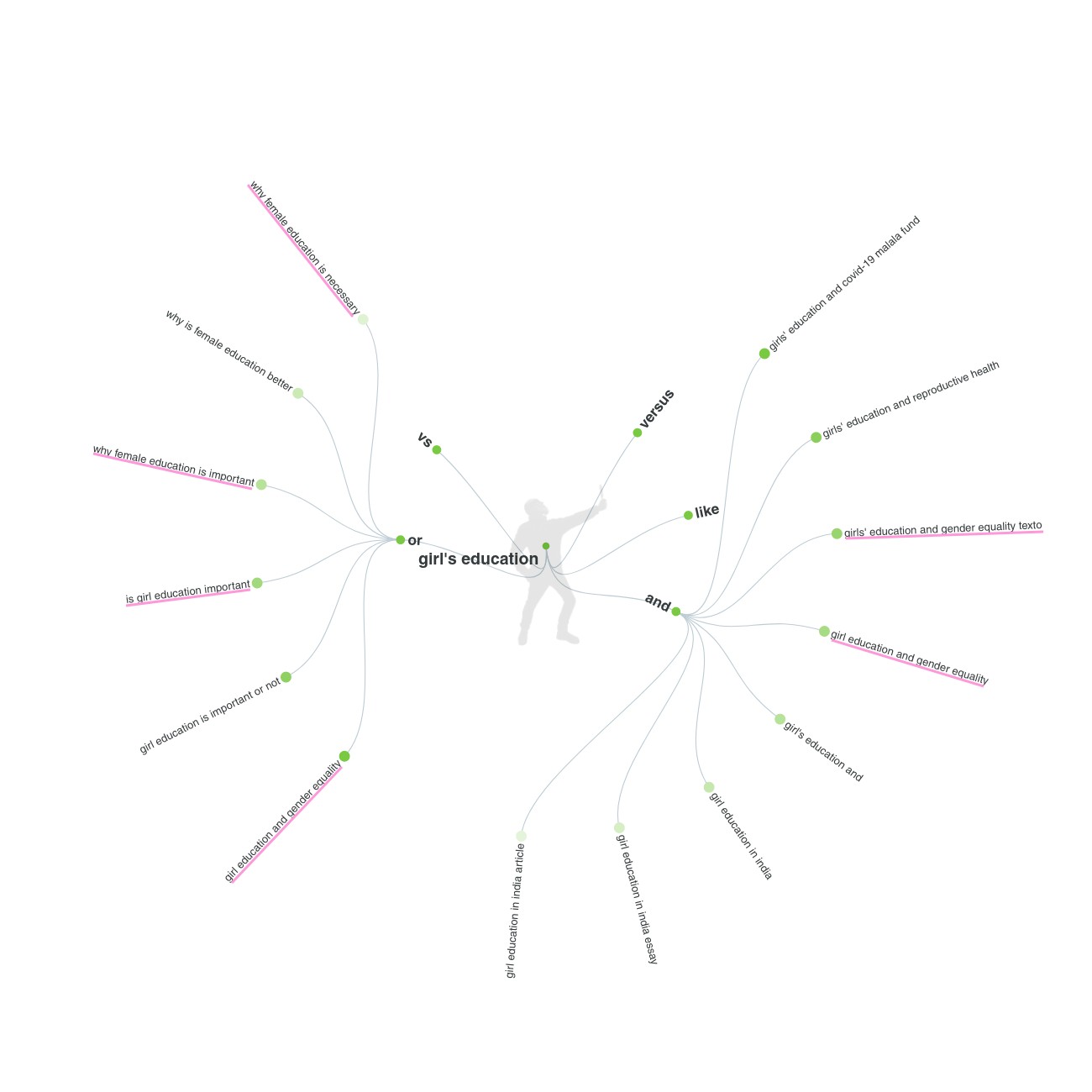
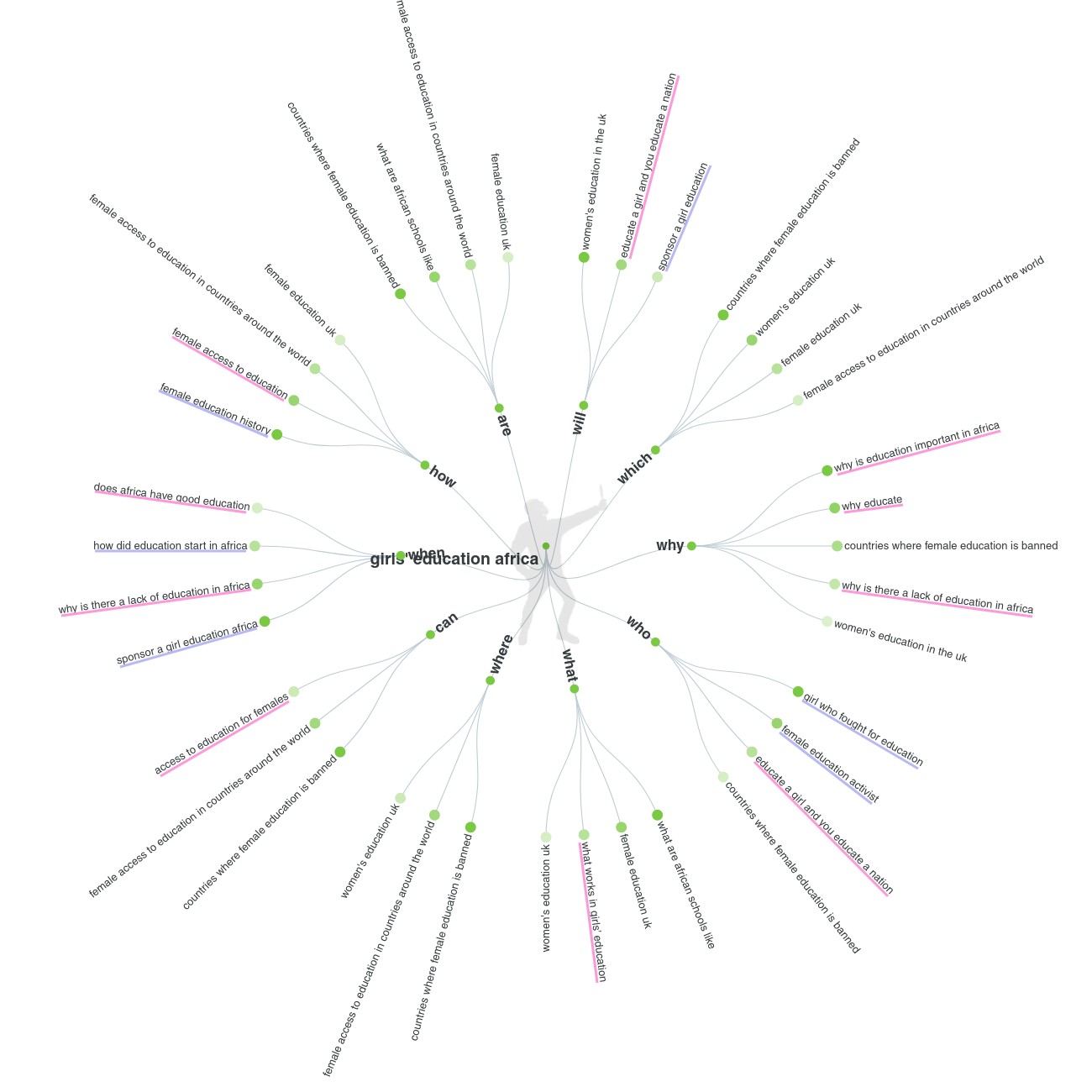
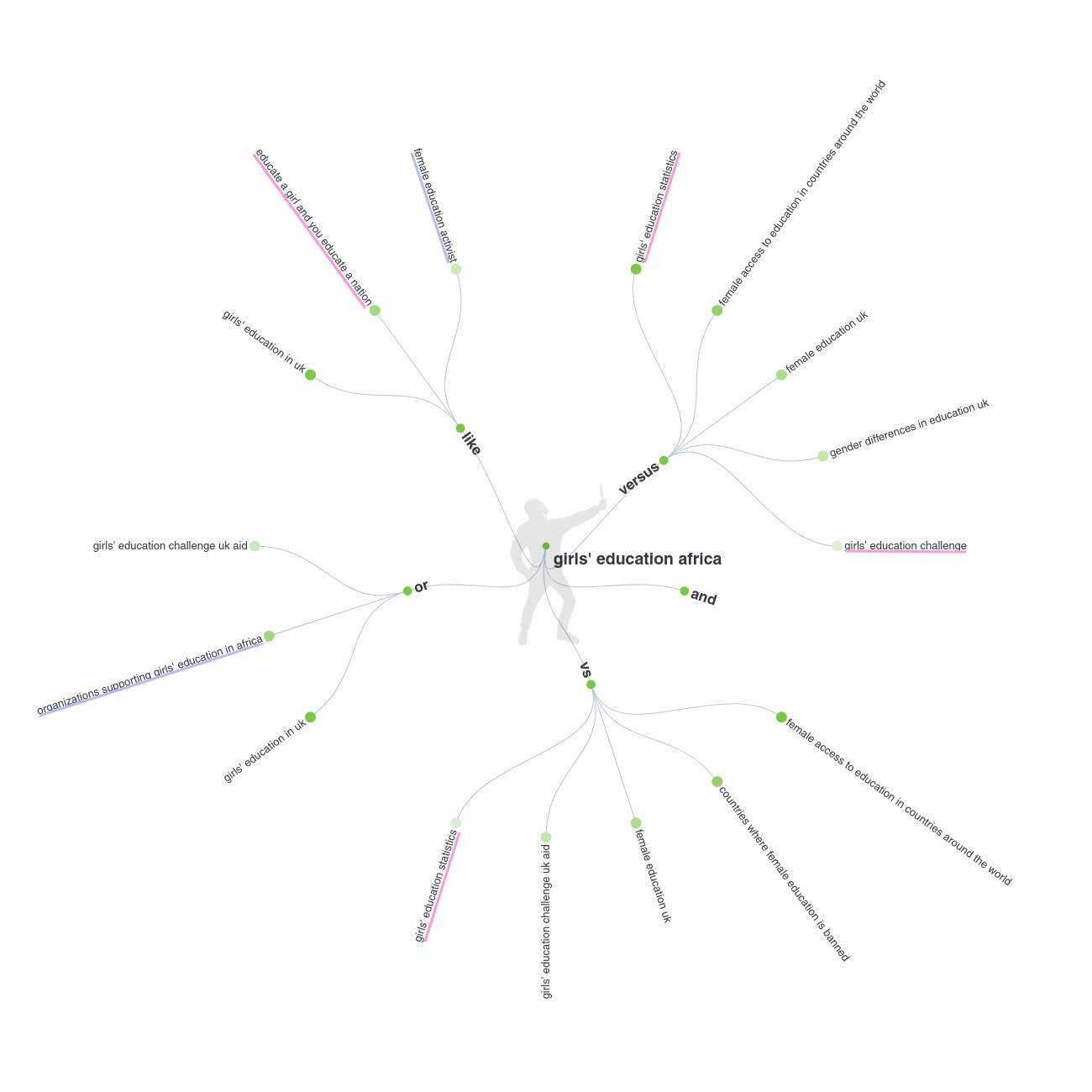
These trends can also be observed in Buzzsumo, where the top articles for the keyword “Girls’ education Africa” mainly revolve around activists and organisations that strive to provide women with better educational opportunities.
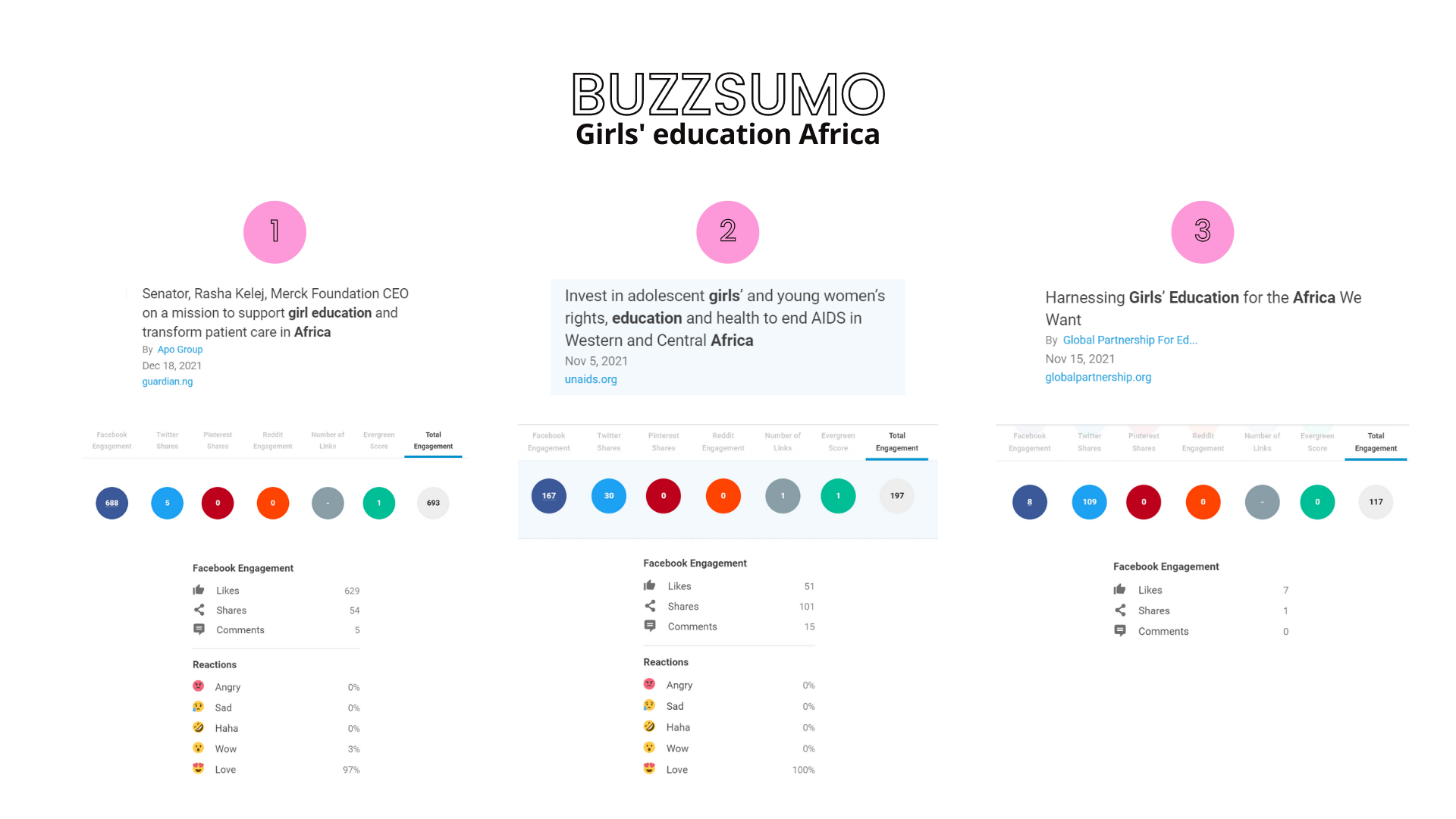
Recommendations
Based on the collected data, the main suggestion for the SaGG Foundation is to pursue content diversification across its social media platforms, as each one of these is populated by different types of users with specific needs, preferences, and behaviours. In other words, the charity should keep focusing on its worthy cause with a more strategic approach to each platform to provide its potential donors with what they need according to where they are.
On Facebook, where people are more inclined to read [9], the organisation should concentrate on raising awareness and inspiring actions through posts with longer captions that explain why women’s education is vital and how ordinary people can concretely contribute to the cause by becoming sponsors. Similarly, on LinkedIn, where users usually browse their feed first thing in the morning to catch up with the latest news [10], the charity should opt for posts with longer captions focused on the world’s need for more educated women and aimed at professional women that desire to take action and, hopefully, become SaGG champions.
On Twitter, where characters are limited to 280 and people tend to look for bite-sized news [11], the SaGG Foundation should instead prioritise infographics and short videos, that are easier to digest, and make use of relevant hashtags, especially those related to special events like Women’s International Day (#WomensInternationalDay), prying their ability to reach bigger audiences and increase the chances of being noticed in the so-called Trends section. Likewise, on Instagram, where people usually do not have time to read, eye-catching and brief formats should be preferred [12]. For instance, Reels and Stories could be used to give access to real testimonies and behind-the-scene content, leveraging their ability to offer a full-screen experience and their peculiar features, such as question stickers, in order to catch potential donors and sponsors’ attention and encourage their participation.
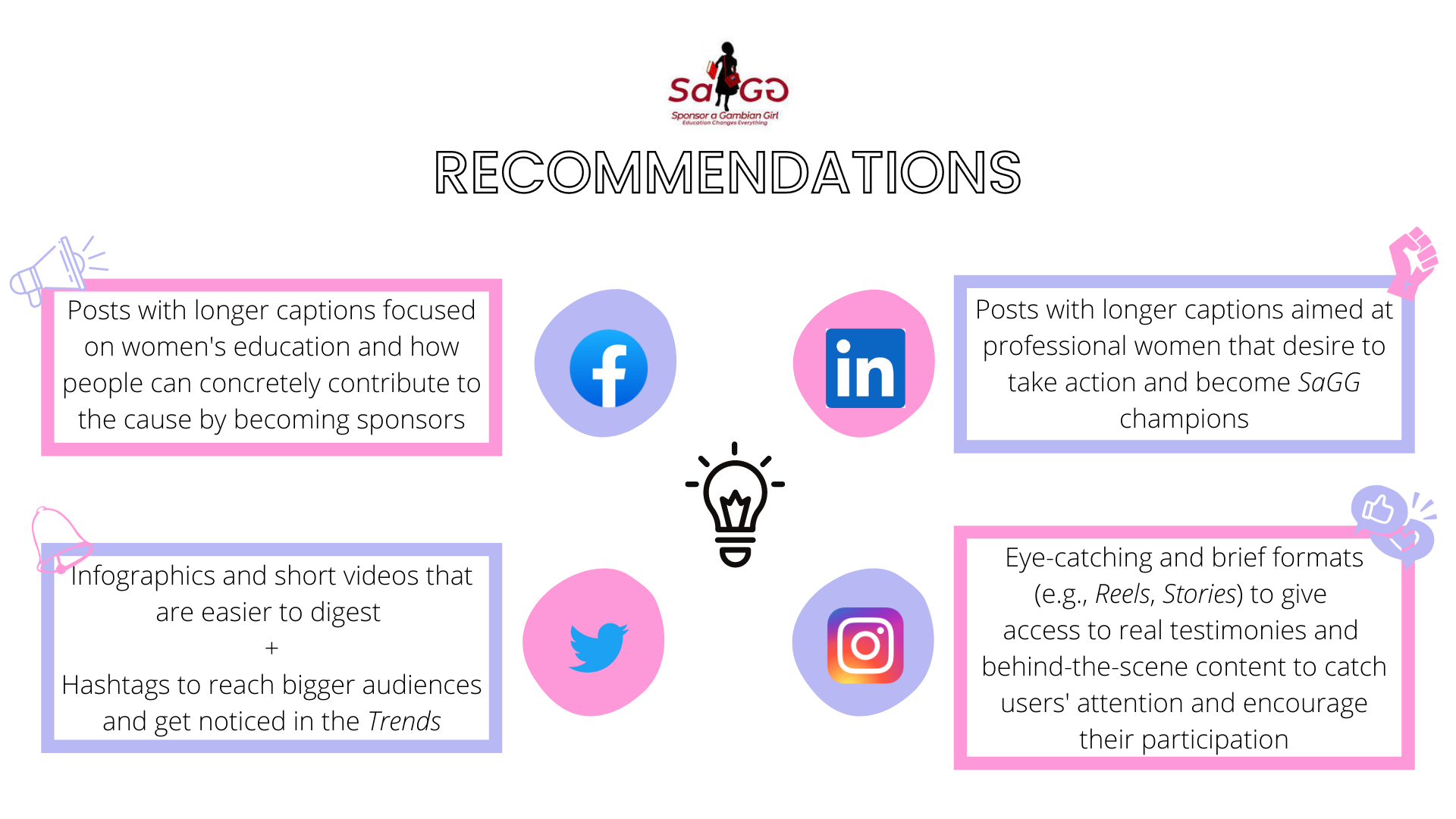
To conclude the analysis, it is essential to underline that, despite the need for content diversification, the SaGG Foundation should always bear in mind that diversifying does not mean forgetting about consistency. Therefore, it must continue to guarantee a relevant and coherent experience across all its digital platforms as each one of them might have its own focus, but all of them need to work towards a common goal, that is, educating about women’s empowerment and supporting Gambian girls throughout their educational path.
References
[1] SaGG Foundation (no date, a). Sponsor a Girl Child The Gambia. SaGG Foundation. Available from https://www.saggfoundation.org/about-us.html [Accessed 25 March 2022].
[2] SaGG Foundation (no date, b). Benefits and Impact of Girls’ Education. SaGG Foundation. Available from https://www.saggfoundation.org/our-impact.html [Accessed 25 March 2022].
[3] Lee, I. (2018). Social media analytics for enterprises: Typology, methods, and processes. Business Horizons, 61 (2), 199–210. Available from https://doi.org/10.1016/j.bushor.2017.11.002 [Accessed 25 March 2022].
[4] Rival IQ. (2021). Average engagement rate with brand posts on Facebook in 2020, by vertical. London: Statista. Available from https://www.statista.com/statistics/204067/daily-facebook-content-net-page-likes-by-vertical/ [Accessed 25 March 2022].
[5] Rival IQ. (2022). Average engagement rate with brand posts on Instagram in 2021, by vertical. London: Statista. Available from https://www.statista.com/statistics/795367/most-popular-verticals-instagram/ [Accessed 25 March 2022].
[6] Rival IQ. (2021). Average engagement rate with brand posts on Twitter in 2020, by vertical. London: Statista. Available from https://www.statista.com/statistics/798414/daily-twitter-brand-audience-mentions-by-vertical/ [Accessed 25 March 2022].
[7] Cucu, E. (2021). [STUDY] LinkedIn Engagement Rate: 39,465 Business Posts Show How Visual Oriented Content Gets Ahead on LinkedIn. Socialinsider. Available from https://www.socialinsider.io/blog/linkedin-engagement-rate/ [Accessed 25 March 2022].
[8] SaGG Foundation (no date, c). SaGG Social Media Audience Report. Blackboard. Available from Blackboard (Social Media and Content Marketing module) [Accessed 25 March 2022].
[9] Beam, M.A. et al. (2018). Context collapse and privacy management: Diversity in Facebook friends increases online news reading and sharing. New Media & Society, 20 (7), 2296–2314. Available from https://doi.org/10.1177/1461444817714790 [Accessed 25 March 2022].
[10] Li, X., Cox, A. and Wang, Z. (2018). How do social network sites support product users’ knowledge construction? A study of LinkedIn. Online Information Review, 42 (3), 304-323. Available from https://www.proquest.com/docview/2031409083?accountid=14987&pq-origsite=primo&forcedol=true [Accessed 25 March 2022].
[11] van de Velde, B., Meijer, A. and Homburg, V. (2015). Police message diffusion on Twitter: analysing the reach of social media communications. Behaviour & Information Technology, 34 (1), 4–16. Available from https://doi.org/10.1080/0144929X.2014.942754 [Accessed 25 March 2022].
[12] Carlson, K. (2021). Here’s Why It’s Not Too Late to Start Using Instagram Reels for Your Business. Special Events Magazine. Available from https://www.proquest.com/docview/2522565490?accountid=14987&pq-origsite=primo&forcedol=true [Accessed 25 March 2022].
